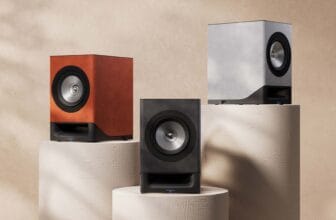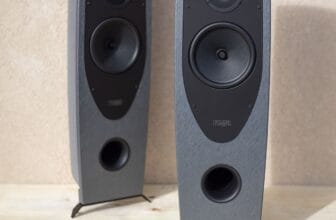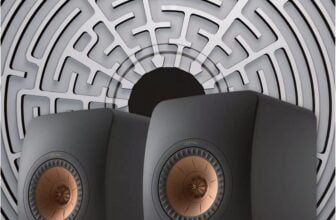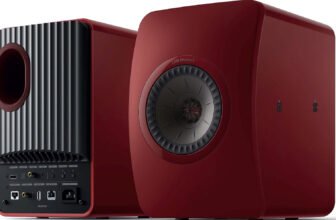Canton Reference 9 Review
Canton does not reinvent itself, but with every new release, it underlines and reinforces its claim to be one of the absolute top names in German speaker manufacturing.
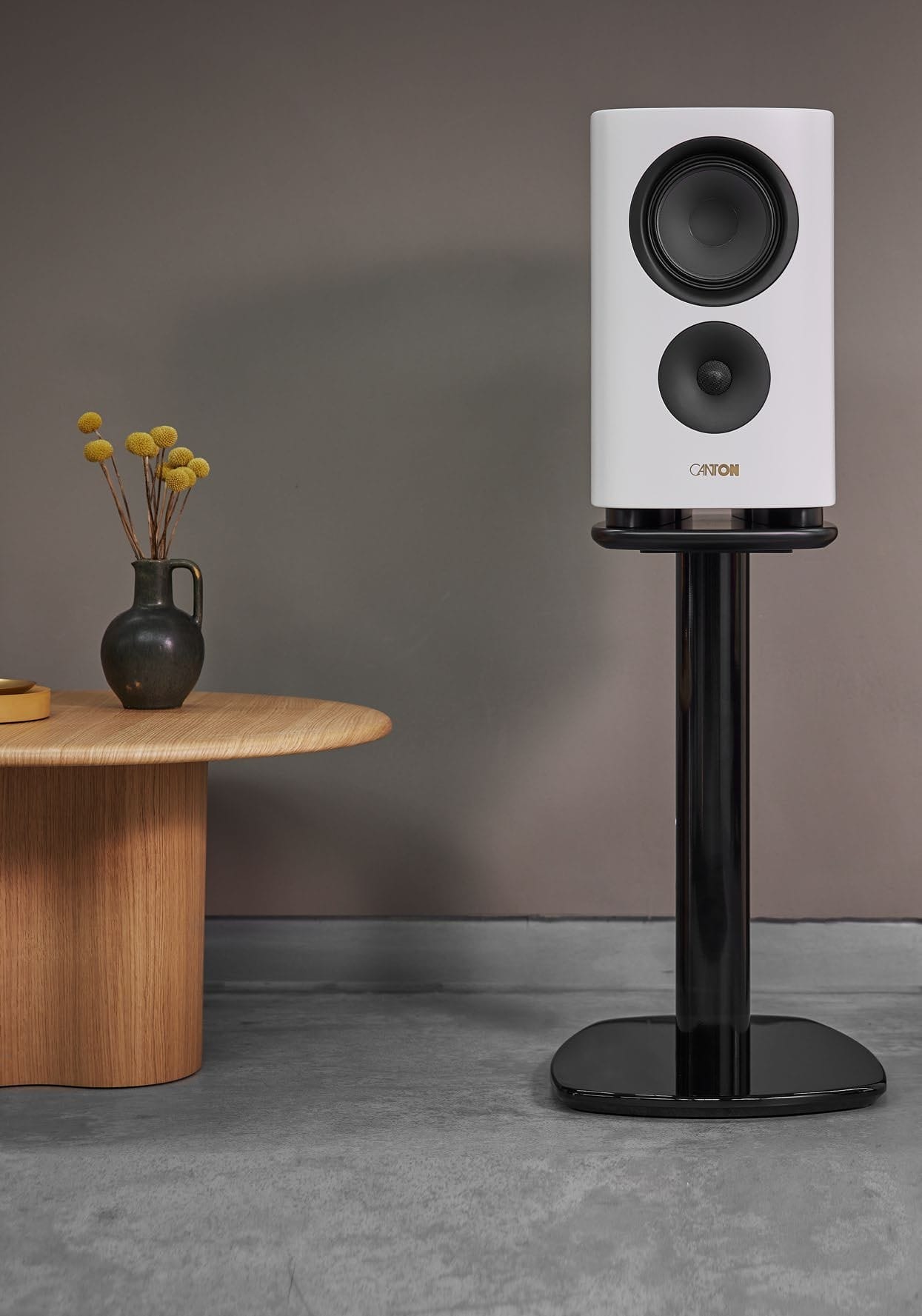
Those who follow us closely will know: we are big fans of Canton. Every time a delivery arrives from Weilrod at our editorial office or Chief Developer Frank Göbl personally brings in a test device, we eagerly anticipate a great listening session. So far, no product from the traditional family company founded by Günther Seitz has disappointed us.
Whether compact systems like the Soundbar DM5, the wireless Smart Soundbox, or the smart new versions of the Vento collection models and their Dolby Atmos ensemble – listening to music or enjoying a home cinema experience on Canton devices has always been a pleasure. A look at other specialist magazines quickly shows that we at Reviewary are not alone in this assessment.
There seems to be something special in every Canton speaker. It’s no wonder that there is always a large crowd in Canton’s exhibition rooms at hi-fi shows, such as the Middle German Hi-Fi Days. The upcoming event, organized by our publishing team and Leipzig-based specialist retailer Uni-HiFi, will undoubtedly attract great interest again. Canton fans can look forward to two highlights from the Reference collection in Leipzig: the Canton Reference 7 floor-standing speakers and the Reference 9 compact speakers. We were able to bring the latter to Leipzig for an extensive test session in our listening room ahead of the MDHT show.
Friends of the House
If you are planning to visit our beautiful show in Leipzig, don’t wait until the last minute to head to the “Brandenburg” room on the first floor of the Old Print Shop, where there is usually a rush for good seats at Canton’s presentations. In the recent past, we had two representatives from Canton’s flagship Reference series in our tests: the Reference 7 and Reference 1 floor-standing speakers.
Both achieved a test result of 9.7 out of 10, earning the “Reference Class” rating. Overall, we have hosted over forty models from the traditional company in Taunus in Reviewary! With an average sales price of $2,700 for the tested devices, Canton has achieved an excellent average result of 9.1 out of 10. Especially in terms of price-performance ratio, Canton is repeatedly the winner.

We must admit that after all these positive test experiences, it is becoming harder to approach a Canton speaker test without bias. Especially when the test model carries the “Reference” label, we expect an impressive performance. This is true for the Reference 9 compact speaker as well. But what exactly makes a speaker in this series a reference model?
Care and Persistence
The list is long. Starting with the curved cabinet made of thick multi-layer laminate, which in Canton’s Reference series generally avoids parallel walls. This design trick prevents standing waves from occurring. Additionally, the body of a Reference speaker, lacquered in twelve layers, is reinforced multiple times from the inside to avoid any resonances, even under high load.
All Reference series speakers are open at the bottom. The downfire bass reflex system works with a highly sophisticated bass guide. Its carefully calculated design allows for controlled bass output without any flow noise. This also makes the speaker placement more flexible as it is relatively independent of surrounding walls. However, careful placement is recommended, as the speaker’s side radiation can be negatively affected by nearby walls. The true reference quality of the Reference models lies in their technical features. These speakers use specially developed high-end cables with six wires per phase to ensure signal transmission.

The signal is transmitted from the bi-wiring terminal with gold-plated full-metal connections directly to the heart of each Reference speaker: the crossover. This component ensures that the signal is split into three separate paths for all models in the series – except for the compact Reference 9 we tested. High-quality air coils and ferrite core inductors take on this honorable task.
Canton emphasizes that the crossover plays a crucial role in shaping the sound and receives special attention. It is much more than a simple “fix-it device” – this is the philosophy behind it.
Experience and Understanding
In our test model, the compact Canton Reference 9, the signal is divided into two paths, covering the range from 25 Hz to 40 kHz. A 17.4 cm diameter driver is used for the midrange and bass. Canton relies on its in-house material composition of tungsten and ceramic for the membrane. The production of the newly developed “Black Ceramic Tungsten” for the Reference collection demands a great deal of expertise. Fortunately, in Weilrod in Taunus, it is almost a tradition for the company to transform aluminum into ceramic and treat half-finished membranes in electrolysis baths before refining them with tungsten. The ideal membrane may be an unattainable utopia, but Canton consistently gets closer by optimizing the golden ratio of rigidity and lightness.
To make the most of this, the new BCT membrane is also embedded in a typically wide and soft Canton wave surround. Canton has also developed a new material for the cover rings of the chassis used in the new Reference collection. POM is a thermoplastic material known for its high stiffness and excellent damping properties. For the construction of the chassis baskets, Canton uses glass fiber-reinforced polycarbonate, which is also torsion-resistant and vibration-damped. The midrange and bass driver is powered by a massive double ferrite magnet and a copper voice coil.
Everything is manufactured in-house to meet the high-quality standard. The 25 mm tweeter, which takes over at 2,900 Hz, is also made from Black Ceramic in the compact Reference 9. It sits in a waveguide based on extensive computer simulations, promising an impressively wide dispersion pattern. The tweeter can be raised or lowered by 1.5 dB if needed, with Canton providing gold-plated bridges for adjustment on the rear-mounted terminal with high-quality WBT Nextgen connection clamps.
The ensemble is rounded off by the mentioned bass reflex. This almost aerodynamically perfect airflow outlet ends in a bass guide, which Canton has incorporated for the first time in a compact speaker. This is an air guide embedded in the base that further reduces flow noise and adds the aforementioned flexibility in speaker placement.
Typical Canton
Now, let’s move on to the enjoyable part of this test. For this, we connect our two test models to the new RAS-5000 streaming amplifier from Rotel. This pairing is perfect, as Rotel will also be Canton’s electronics partner at the upcoming Middle German Hi-Fi Days. You may have already read the individual test of the new Rotel on the previous pages. So, let’s get straight to the main question: how do the current Canton Reference 9 compact speakers sound? “Reanimator” from Amon Tobin’s album “Permutation” provides our first impression.
And it is not just positive – as expected, it is overwhelmingly impressive. The track, with its massive sound density, can challenge many speakers. However, our two Reference 9 test models remain completely relaxed, delivering the demanding mix of punchy breakbeats, powerful bass/midrange blend, and crystal-clear highs with effortless ease. Punch, punch, punch – the deep frequency pulses are implemented with remarkable power and strict precision. The midrange shows a similar pattern: clear, fast impulses that are sharply and precisely positioned, never at risk of blending into the mix or blurring. The highs are brilliant and sensitively balanced.

With “Eras” by Juana Molina, the speakers continue their impressive performance. The opening drums sound remarkably natural, especially the fine, sandy eighth notes of the ride cymbal are rendered precisely and in detail. When the whole band joins in, the stereo pair unfolds a deep and spacious soundscape, with individual instruments appearing three-dimensional and seeming to float in front of the sweet spot. Juana Molina herself feels so present as if she were performing live right in front of us. Of course, Canton’s Reference 9 can also handle full-blown rock music. In “Ohio” by Kingswood, in addition to the impressive spatial width, the punchy low-end once again stands out.
The kick drum, which comes in after a few measures, sounds simply massive. It fills the entire room with what feels like a single wave. Incredible! Yet the rich, sonorous bass does not obscure the fine transients, which can be found in the unison-sounding electric guitar. When the song fully kicks in, there is barely any room left for subtle textural details. Nonetheless, the compact Reference 9 manages to draw a snare sound that is unparalleled. The fine snare strands under the wide wooden shell can be sensed down to the last detail.
Our only significant criticism: it’s hard to pull yourself away from these speakers. Sound-wise, the Reference 9 clearly shows that it demands full attention and does not tolerate distractions. Like other models in the Reference collection, the Reference 9 is aimed at true enthusiasts. One must be ready to fully indulge in the music and appreciate the moment.
The Reference 9 is not for casual listening – it’s made to experience and enjoy music in its full depth. We highly recommend visiting Room “Brandenburg” on the weekend of November 9th and 10th at the Middle German Hi-Fi Days at the Old Print Shop in Leipzig to experience the Reference 9 live.
Specifications
General
- Device Class: Compact Speaker
- Price Category: High-End
- Manufacturer: Canton
- Model: Reference 9
- Price (RRP): $3,800 (per pair, converted from 3,600 Euro)
- Dimensions (W/H/D): 26 × 45 × 39 cm
- Weight: 18 kg
Technical Data (According to Manufacturer)
- Design: 2-Way, Bass Reflex
- Impedance: 4 Ohm, 8 Ohm
- Efficiency: 87 dB
- Frequency Response: 25 Hz – 40 kHz
- Power Handling: 220 W
- Room Recommendation: 15–30 m²
- Individual Sound Adjustment: RC Room Adjustment
- Inputs: Single-Wiring
CONCLUSION
The Canton Reference 9 effortlessly joins the impressive performances of previous test models and easily outshines many competitors. The technically sophisticated and meticulously executed features of this speaker result in genuine high-end sound that only Canton can offer at such an affordable price.
Features
- RC Room Adjustment
- BCT Membrane
Advantages
- Immersive sound
- Outstanding price/performance ratio
Disadvantages
- None
Rating
- Bass Reproduction: 9.5/10 (converted from 19/20)
- Midrange Reproduction: 9.75/10 (converted from 19.5/20)
- Treble Reproduction: 9.5/10 (converted from 19/20)
- Spatiality: 8.5/10
Sound Quality: 9.4/10 (converted from 66/70)
Build Quality/Finish: 10/10 User-Friendliness: 10/10
Intermediate Result: 9.6/10 (converted from 86/90)
Price/Performance: 9/10 (very good)
Final Result: Reference Class – 95%


